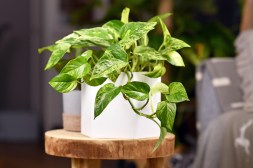Top 5 Effective Strategies for Managing Pests in Your Houseplant Collection
Houseplants are a wonderful way to bring some green into your indoor spaces, but they can also attract pests that threaten their health. Managing pests effectively is crucial for keeping your houseplant collection thriving. In this article, we’ll explore the top five strategies you can use to protect your plants from unwanted invaders.
Regular Inspection
The first step in managing pests is to conduct regular inspections of your houseplants. Take some time each week to closely examine the leaves, stems, and soil of each plant. Look for signs of pest activity such as webbing, discolored leaves, or small bugs hiding underneath the foliage. Early detection is key; catching a pest problem before it escalates will make management much easier.
Maintain Optimal Care Conditions
Healthy plants are less susceptible to pests, so providing optimal care conditions is crucial. This includes ensuring that your plants receive the right amount of sunlight, water, and nutrients without over-fertilizing them. Plants that are stressed due to inadequate light or improper watering practices may become more vulnerable to infestations.
Use Natural Predators
Introducing natural predators into your plant care routine can significantly reduce pest populations without harming your plants or the environment. Ladybugs and lacewings are examples of insects that feed on common houseplant pests like aphids and spider mites. By encouraging these beneficial insects either through release or by planting flowers nearby that attract them, you can manage pest issues naturally.
Organic Pest Control Solutions
When pest populations get out of hand despite preventive measures, consider using organic pest control solutions such as insecticidal soap or neem oil sprays. These products target specific pests while being safe for most houseplants and not posing significant risks to humans or pets when used correctly. Always test any treatment on a small area before applying it broadly.
Quarantine New Plants
Newly acquired plants should always be quarantined before introducing them into your existing collection. This practice helps prevent any potential infestations from spreading to healthy plants already in your home environment. Keep new plants isolated for at least two weeks while monitoring them closely for any signs of pests before bringing them closer to other plants in your collection.
By implementing these five strategies—regular inspection, maintaining optimal care conditions, using natural predators, utilizing organic pest control solutions, and quarantining new arrivals—you’ll create a robust defense against pests in your houseplant collection and keep your greenery flourishing.
This text was generated using a large language model, and select text has been reviewed and moderated for purposes such as readability.


